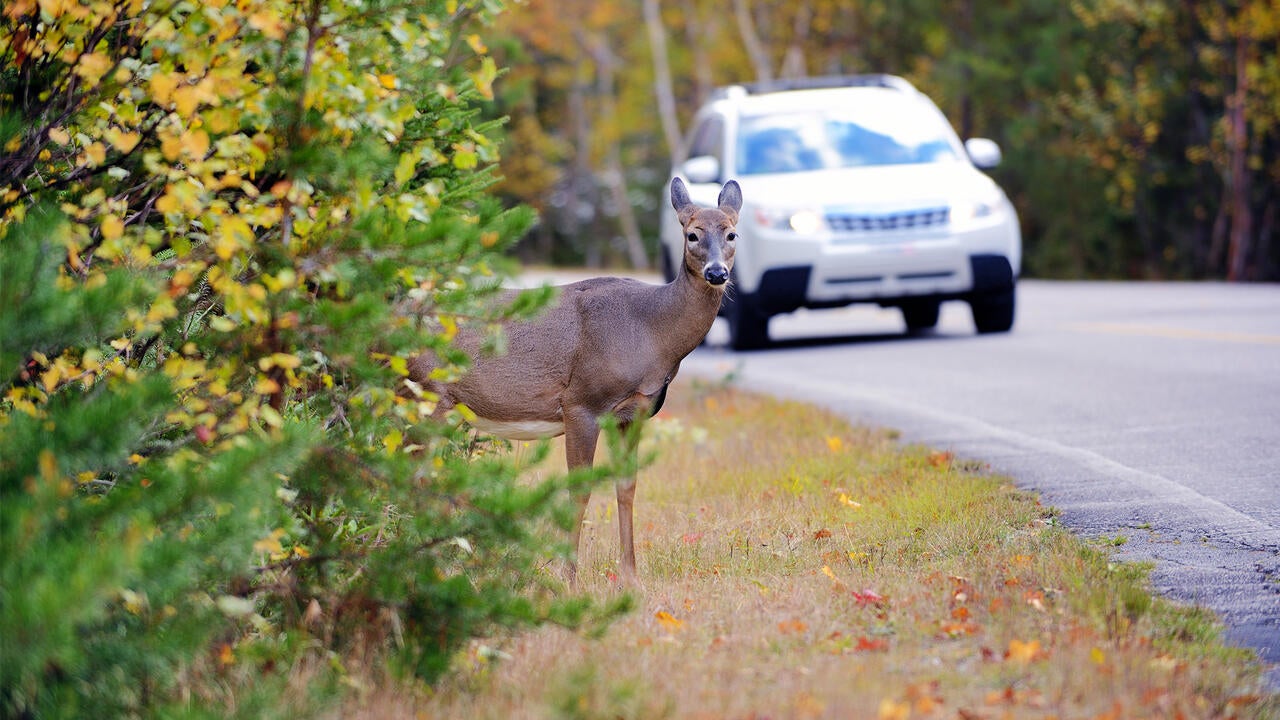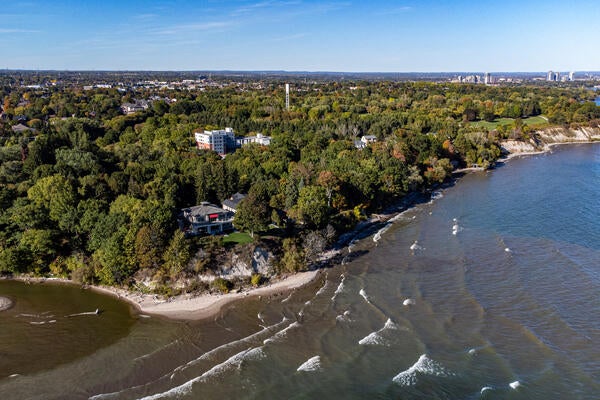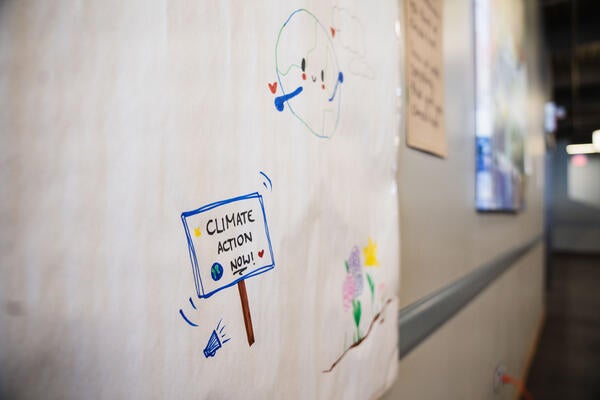
Many wildlife-vehicle collisions preventable
Implementing simple measures could save wildlife and millions of dollars.

Implementing simple measures could save wildlife and millions of dollars.
By Sam Toman Faculty of EnvironmentA new study from the University of Waterloo has found that Ontario could save millions by implementing simple measures to help prevent vehicle accidents involving wildlife.
The Waterloo study focused on Ontario and concluded that many of the thousands of wildlife-vehicle collisions — some fatal — occurring each year could be prevented if authorities implemented a few cost-effective strategies to minimize the occurrences.
Implementing strategies such as better signage, wildlife detection systems, fencing and wildlife crossings could help reduce financial and health-related impacts for people, emergency services and the insurance industry. The measures could also help prevent unnecessary loss in the wildlife populations.

Associate Professor Michael Drescher
“These collisions cost Canadians hundreds of millions a year in vehicle damage and medical costs, as well as traffic delays, emergency services-use and increases in insurance premiums,” said Waterloo’s Associate Professor Michael Drescher, who co-authored the study with graduate student Kristin Elton. “Ontario is missing an opportunity here. The most efficient way to prevent these accidents is to integrate effective measures in wildlife conflict zones every time major road work is undertaken.”
“Within Canada, the Rocky Mountain region is renowned as a leader in the management of wildlife-road conflicts, said Drescher, who estimates five to 10 per cent of car insurance premiums go to animal-related incidents. “They’ve realized the economics are simple. Adding measures to road construction projects only marginally impacts the overall budget, while saving millions in taxpayer money, insurance costs, and potentially lives.

Co-author Kristin Elton

Canada's coasts face increasing flooding and erosion with climate change.
Read more
Canada must act to protect the longest marine and freshwater coastlines in the world from the surge of climate change

Read more
Waterloo researchers are helping shape the next global scientific assessment that will guide world leaders from climate promises to action

The authors of a new study examined the U.S. economy and estimates of the use of artificial intelligence in industry to determine the environmental impact of AI adoption. (Illustration generated by Gemini/Google on November 10, 2025.)
Read more
Energy consumption in the U.S. shifts perception of the environmental risks of AI
The University of Waterloo acknowledges that much of our work takes place on the traditional territory of the Neutral, Anishinaabeg, and Haudenosaunee peoples. Our main campus is situated on the Haldimand Tract, the land granted to the Six Nations that includes six miles on each side of the Grand River. Our active work toward reconciliation takes place across our campuses through research, learning, teaching, and community building, and is co-ordinated within the Office of Indigenous Relations.